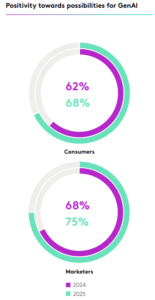Intel Core Ultra 200S desktop processor debuts for AI PCs for enthusiasts
Join our daily and weekly newsletters for the latest updates and exclusive content on industry-leading AI coverage. Learn More Intel launched the new Intel Core Ultra 200S series processor family that will scale AI PC capabilities to desktop platforms and usher in the first enthusiast desktop AI PCs. Led by the Intel Core Ultra 9 processor 285K, the latest generation of enthusiast desktop processors includes five unlocked desktop processors equipped with up to 8 next-gen Performance-cores (P-cores), the fastest cores available for desktop PCs1, and up to 16 next-gen Efficient-cores (E-cores) that altogether result in up to 14% more performance in multi-threaded workloads than the previous generation. The new family are the first neural processing unit (NPU)-enabled desktop processors for enthusiasts and come with a built-in Xe GPU with state-of-the-art media support. “The new Intel Core Ultra 200S series processors deliver on our goals to significantly cut power usage while retaining outstanding gaming performance and delivering leadership compute. The result is a cooler and quieter user experience elevated by new AI gaming and creation capabilities enabled by the NPU, and leadership media performance that leverages our growing graphics portfolio,” said Robert Hallock, vice president and general manager of AI and Technical Marketing at the Client Computing Group at Intel, in a statement. Why it matters Thanks to the latest Intel core and efficiency innovations, Intel Core Ultra 200S desktop processors deliver a landmark reduction in power usage with up to 58% lower package power in everyday applications4 and up to 165W lower system power5 while gaming. The new processor family combines improved efficiency with improved performance, also delivering up to 6% faster single-threaded6 and up to 14% faster multi-threaded performance over the previous generation. With complete AI capabilities powered by the CPU, GPU and NPU, enthusiasts get the intelligent and powerful performance they need for content creation and gaming, all with a reduced energy footprint. By bringing the AI PC to enthusiasts for the first time, the Intel Core Ultra 200S series processors deliver up to 50% faster performance in AI-enabled creator applications against competing flagship processors. The newly available NPU enables offloading of AI functions. Examples include freeing up discrete GPUs to increase gaming frame rates, significantly reducing power usage in AI workloads, and enabling accessibility use cases such as face- and gesture-tracking in games while minimizing performance impact. Intel’s 1st AI PC for enthusiasts Performance gains for Intel’s latest desktop AI PC processor. With up to 36 platform TOPS, the new Intel Core Ultra 200S series processor is Intel’s first and best desktop processor for AI PCs. The Complete Enthusiast Solution: Intel Core Ultra 200S series processors offer excellent performance in AI and content creation, and power an immersive gaming experience, with up to 28% gaming performance uplift compared to competing flagship processors. Intel Core Ultra 200S series processors’ use the new Intel 800 Series chipset, extending platform compatibility with up to 24 PCIe 4.0 lanes, up to 8 SATA 3.0 ports, and up to 10 USB 3.2 ports, empowering enthusiasts to take advantage of the latest connectivity, storage, and other technologies. Intel Core Ultra 200S series processors also bring new overclocking functionality with fine-grain controls, with top turbo frequency in 16.6 MHz steps for P-cores and E-cores. A new memory controller supports fast, new XMP and CUDIMM DDR5 memory up to 48GB per DIMM for up to 192GB in total, and the Intel Extreme Tuning Utility now includes one-click overclocking enhancements. And Intel Core Ultra 200S processors come equipped with 20 CPU PCIe 5.0 lanes, 4 CPU PCIe 4.0 lanes, support for 2 integrated Thunderbolt 4 ports, Wi-Fi 6E and Bluetooth 5.3. Intel Killer Wi-Fi delivers supercharged wireless performance and enables seamless, immersive online gameplay through application priority auto-detection, bandwidth analysis and management, and smart AP selection and switching. The machiens have multi-engine security. Intel Silicon Security Engine helps preserve data confidentiality and code integrity while maintaining high performance for demanding AI workloads. Intel Core Ultra 200S series processors will be available at retail online and in stores, and via OEM partner systems starting Oct. 24, 2024. source
Intel Core Ultra 200S desktop processor debuts for AI PCs for enthusiasts Read More »











